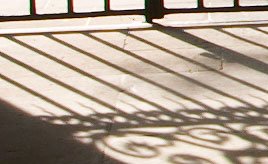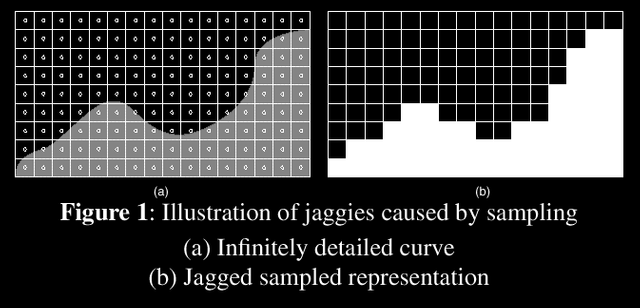Film vs Digital: A Technical Look At Two Different Methods for Capturing Light
When comparing these two mediums, it is essential to understand the physics behind how these mediums take different approaches to the same problem: How to Capture light and store it.
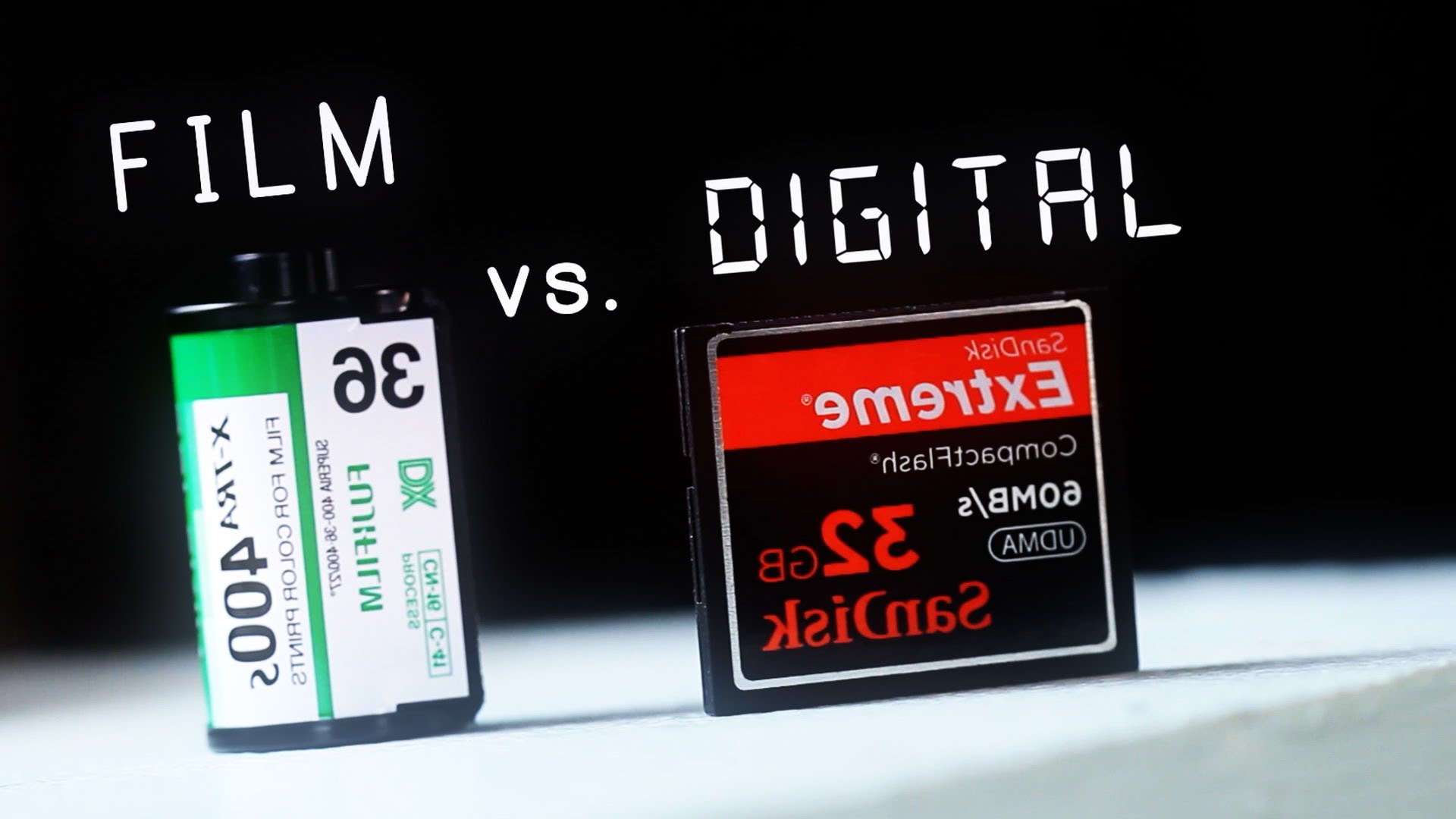
Source
Capturing light
Digital
The fundamental device capturing light in a digital camera is a device called an active pixel sensor (APS), of which the most widely used version is known as a CMOS-Sensor (complementary metal-oxide-semiconductor). These sensors operate under the same basic principle: Light passes through a red, green or blue filter and reaches a photodetector, creating an electric current, which is then amplified and processed. As each photodetector is filtered by a single-colour filter, each one only records the light intensity of a specific colour, resulting in red, green and blue pixels, which are grouped into their corresponding colour channels. This doesn't actually deliver any information yet, so the filter array is usually arranged in a mosaic pattern and three adjacent colour filters are grouped and interpolated to deliver a three-channel colour-mix for a specific spot on the sensor, which we refer to as a pixel. When all these singular pixels are aggregated, an image is created, which is made up of the light that originally fell onto the sensor.

Source
Typical Bayer-array, as used in modern CMOS-sensors.
Film
The principle behind the capturing light within a roll of film is an emulsion containing light sensitive silver halide crystals, that undergo a chemical change when hit by light. This chemical change is invisible and referred to as a "latent image" and only becomes visible during development, where the chemical reaction of silver halide to silver metal is amplified and then fixed, to stop the reaction and preserve the image. The silver halide crystals are arranged into layers of different colour sensitivities and stacked on top of each other, creating a three-dimensional layer within which light is captured. The average size and shape of the individual crystals affect light sensitivity and the visibility of the grain of the film and during the processing of the negative (or positive) image exposure can be corrected using a technique called pushing and pulling.
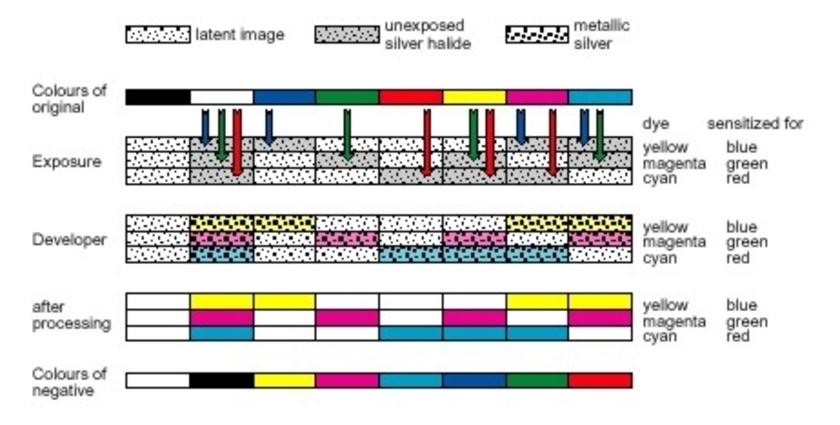
Source
The basic principle behind a film emulsion.
Advantages and Disadvantages
Digital
Due to the nature of how an active pixel sensor turns light into an electrical signal, the light sensitivity can be modulated on the fly by regulating the amount of amplification the electrical signal receives. The final image can also be previewed as the picture is being taken and show the photographer the effects of all his chosen settings. This is closely related to another advantage of the digital medium, which is the ability to seamlessly switch between recording video and stills. Of course, the final image is only a digital file, so it's easily transported or shared and highly editable with the appropriate software. Another big advantage of digital is the ability for limitless backups and no fear of the image degrading.
On the other hand, the basic principle behind the active pixel sensor also leads to its main limitations. For starters the image sensor is effectively a two-dimensional object, resulting in the final information being a simple set of intensity values without any physical "depth". Additionally, there effectively is no primary image, as the light is instantly being converted into a set of values and often undergoes basic processing before even reaching the RAW format. This initial loss of information is further intensified by the fact that photo-detectors have a maximum and a minimum amount of light intensity they can capture before any further information is discarded. This effect is called clipping and results in total loss of information in extreme light or dark areas of the image.
Furthermore, since pixels are of equal size and shape and arranged in a recurring pattern, the final image will often exhibit a very "clean" look, which requires the use of digital enhancements to make it look more organic. Finally, two adjacent pixels cannot record a gradient between them and will only be able to give a set value at a given point, resulting in the loss of all information at the transition from one pixel to the other. This leads to jagged edges and is referred to as aliasing.
Film
First of all, film delivers a primary image (the negative, or positive), which contains all the information that was received through the camera and permanently fixed during processing. The advantage of this is, that no information is lost in the primary stage of image creation. Since a film emulsion is a three-dimensional object and the crystals within the individual layers are randomly arranged, the resulting image will seem to have more "depth" and be more organic. Additionally, aliasing effects are virtually non-existent, since there are no clear boundaries between the crystals within the emulsion.

Source
Electron-microscope view of the silver halide crystals within a roll of Kodak Portra 160 emulsion, after the gelatin has been removed.
Clipping doesn't occur, as the crystals darken gradually and thus retain all information until completely black or white values are reached and as a result, film often exhibits a wider and more natural dynamic range. Finally, one of the often unnoticed advantages of film is the effective resolution. While 35mm can easily compete with digital images at low ISO values, the advantage of film quickly becomes clear when moving into larger formats. Medium format easily beats regular image sensors and has no problem competing with medium format digital sensors, whilst large format is unparalleled in the quality of the final image it delivers, with some sheet film being able to reach 800 MP of effective resolution. This is mainly a result of using a larger negative, however since ISO is directly related to the size and shape of the silver halide crystals, the use of low ISO film with a larger format greatly amplifies the effective resolution, resulting in very high-quality images.
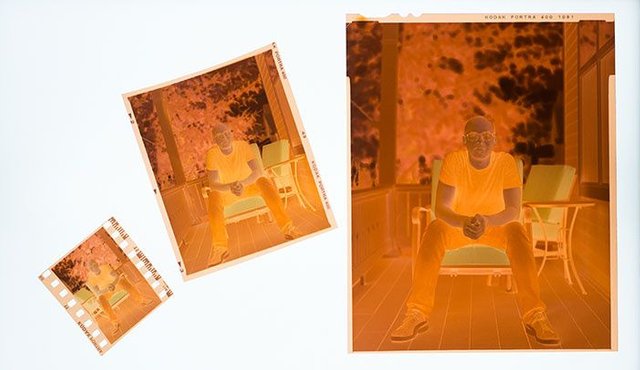
Source
The three basic formats of film, 35mm, medium format and large format.
However, not all is glorious in the world of film photography and the limitations of a physical medium quickly become apparent. Apart from the obvious issues of not being able to see your image prior to shooting it and the lack of video capability, there are additional drawbacks. It's very time consuming to create an adequate backup of your negatives and the results will never be identical copies. There is also the very real limitation of having to choose a specific ISO value and not being able to change it until the roll of film is finished. If you want to share the image you have to scan it and since that is a digital process, a lot of the advantages are lost in the process, along with a substantial amount of image quality. The unprocessed film is also very fragile and can be destroyed a number of times until a final fixed negative is received, which once again has to be treated correctly, or else the image will degrade over time. Any kind of physical editing is a painstakingly slow process, has to be done manually and cannot be undone if one makes a mistake. Finally, the process of printing the images is either a rather time-consuming affair or requires scanning, which leads us to the aforementioned issues.
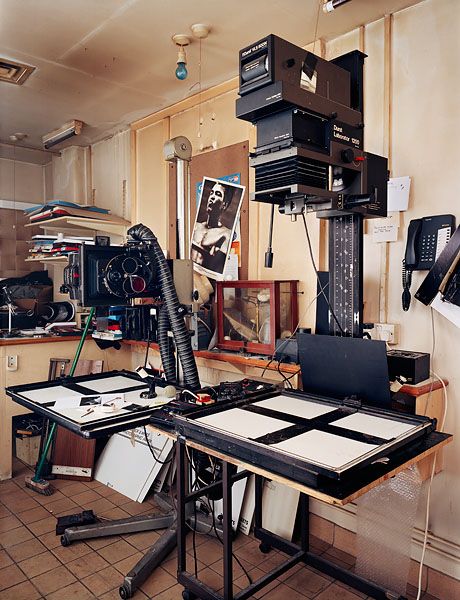
Source Enlarger setup for darkroom printing.
Where they shine
Both mediums have their place and are best used where they can show their true strengths.
Digital photography is ideal when it comes to images that are required instantly, need to be easily editable and can be transferred quickly. This is why most photojournalists use digital images, as speed of transfer and ease of manipulation are most important in that field of work. Additionally, digital imaging reduces the overall encumbrance of a photographer and doesn't rely on labs to develop the images, making it more suitable for travel photography and scientific expeditions.
Film photography, on the other hand, shines when it comes to creating high fidelity images and prints. Since the process can be conducted in an almost lossless manner when the right amount of effort is applied, the resulting images will be the closest representation of what actually went into the camera. Additionally, with the use of larger formats than 35mm truly massive prints can be created without a noticeable loss of quality. Furthermore, the ability to choose the physical medium the image is captured with by choosing a specific film, results in more artistic freedom and allows photographers a wider range of options during the process of capturing the actual image.
